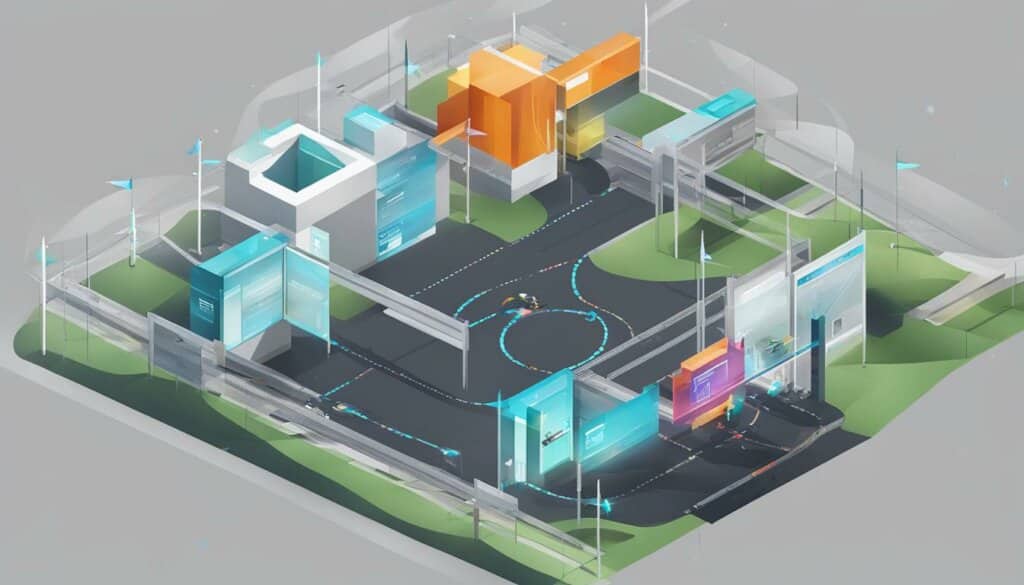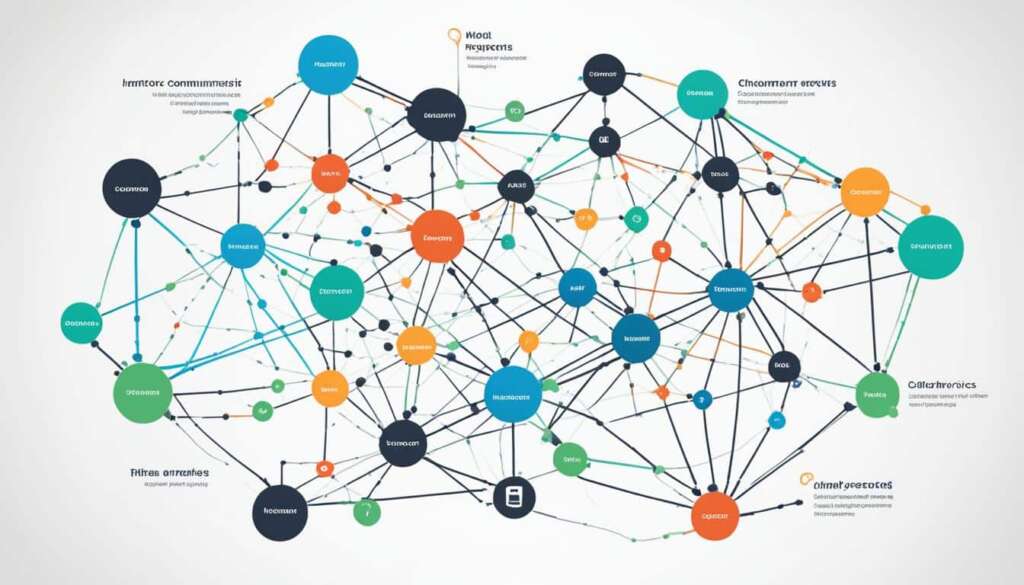Table of Contents
In the rapidly evolving world of e-commerce, building a scalable and robust backend architecture is critical for delivering a seamless and high-performing user experience. With online retail platforms experiencing unprecedented growth, it is essential to adopt an architecture that can handle the increasing demands efficiently.
Enter microservices architecture – a design approach that offers a scalable solution for e-commerce applications. By breaking down functionality into small, independent services that communicate with each other, microservices architecture enables flexibility, efficiency, and fault tolerance.
This article will dive deep into the design decisions, software patterns, and best practices behind building a scalable e-commerce backend using microservices and API gateways. We will explore the role of API gateways in managing client requests, handling authentication and security, and optimizing performance. Additionally, we will discuss how RabbitMQ enables asynchronous communication between microservices and the use of MongoDB and Express.js for data storage and retrieval.
By leveraging microservices architecture and API gateways, online retail platforms can create a highly scalable and efficient backend that meets the growing demands of modern e-commerce. Stay tuned for a comprehensive exploration of each component and its role in building a successful e-commerce infrastructure.
Understanding Microservices in E Commerce
Microservices architecture forms the foundation of a flexible and scalable framework for E Commerce applications. The key principle behind microservices is the decoupling of functionality into independent services. Each microservice is responsible for a specific business capability, allowing for separate development and deployment. This approach enables teams to work on different services simultaneously, accelerating development cycles and ensuring faster time-to-market for new features.
One of the significant advantages of microservices architecture is its scalability. Unlike monolithic systems, microservices offer targeted scalability, allowing specific services to scale based on their individual needs. This selective approach enhances performance and resource allocation, optimizing the overall system’s efficiency.
Moreover, microservices promote fault isolation, enhancing the resilience of the system as a whole. Since each service operates independently, failures in one microservice do not have a cascading effect on others, ensuring the uninterrupted operation of the overall E Commerce platform.
Communication between microservices is typically facilitated through lightweight protocols like HTTP or messaging systems such as RabbitMQ. These communication mechanisms enable seamless and efficient data transfer between services, further enhancing the overall performance of the microservices architecture.
The Benefits of Microservices Architecture:
- Decoupling functionality: Microservices allow for the independent development and deployment of specific business capabilities.
- Scalability: Targeted scalability of individual services ensures optimal resource allocation and system performance.
- Fault isolation: Failures in one microservice do not affect the operation of others, enhancing the overall resilience of the system.
- Independent development: Teams can work on different services simultaneously, speeding up development cycles and enabling faster time-to-market.
Microservices architecture provides a robust foundation for building scalable and resilient E Commerce platforms. By decoupling functionality, embracing scalability, and ensuring fault isolation, organizations can create flexible and efficient systems that cater to the evolving needs of the online retail industry.
| Key Benefits of Microservices Architecture | Description |
|---|---|
| Decoupling functionality | Each microservice is responsible for a specific business capability, allowing for independent development and deployment. |
| Scalability | Microservices offer targeted scalability, enabling optimal resource allocation and system performance. |
| Fault isolation | Failures in one microservice do not impact the operation of others, enhancing overall system resilience. |
| Independent development | Teams can work on different services simultaneously, accelerating development cycles and enabling faster time-to-market. |
Exploring API Gateways in E Commerce Microservices Architecture
API gateways play a crucial role in microservices architectures, serving as a single entry point for client applications. These gateways are responsible for routing client requests to the appropriate microservices based on specific criteria, ensuring seamless communication between the two.
One of the key functions of API gateways is handling different protocols, allowing clients to use their preferred communication methods while maintaining compatibility with the microservices. This protocol translation capability ensures that diverse client applications can efficiently interact with the backend services.
API gateways also provide centralized authentication and authorization mechanisms, ensuring secure access to microservices and protecting sensitive data. By implementing authentication and authorization at the gateway level, developers can simplify the overall security architecture and enforce consistent access control policies.
Furthermore, API gateways offer additional capabilities such as rate limiting and caching to enhance the performance of microservices. They enforce rate limits on client requests, preventing excessive usage that could degrade the backend’s availability and performance. Additionally, gateways can cache responses from microservices, reducing redundant requests and improving overall response times.
All these features make API gateways an essential component of e-commerce microservices architecture, enabling efficient request routing, protocol translation, authentication and authorization, rate limiting, and caching.

Designing the Microservices and API Gateway for E-Commerce
In designing the microservices and API gateway for an e-commerce backend, several distinct services play specific roles. These services, combined with Docker containerization, provide a scalable and efficient architecture for handling the demands of modern e-commerce applications.
The authentication microservice is responsible for user authentication and authorization, ensuring the security of the entire system. It verifies user credentials, manages access permissions, and protects sensitive data from unauthorized access.
The product microservice is tasked with managing product-related information. This includes details, inventory levels, pricing, and other essential data required for seamless product management. By handling product information separately, this microservice enables better data organization and retrieval, enhancing overall system efficiency.
The order microservice is responsible for the creation and management of orders. It handles order placement, tracking, and total price calculation, ensuring a smooth and reliable order management process. This microservice plays a crucial role in maintaining accurate and up-to-date order information for both customers and the system.
The API gateway serves as a single entry point for client requests. It acts as a gateway that abstracts the complexity of the underlying microservices, making it easier for clients to interact with the system. The API gateway handles incoming requests, routes them to the appropriate microservices, and ensures seamless communication.
Each microservice is encapsulated within its own Docker container. This containerization approach provides several benefits, including scalability, isolation, and consistent deployments. By encapsulating microservices in Docker containers, it becomes easier to scale individual services based on demand, ensuring optimal resource allocation. Additionally, Docker containers enable isolation, ensuring that any issues or failures within one container do not impact the others. This enhances system resilience and stability. Lastly, Docker containers simplify the deployment process by providing a consistent and reproducible environment for running microservices.
Conclusion
Combining e commerce microservices architecture with API gateways offers a scalable and flexible solution for developing robust ecommerce backends. By decoupling functionality into independent services, teams can work concurrently on different aspects, resulting in faster development cycles and quicker time-to-market for new features. Microservices enable targeted scalability and fault isolation, enhancing the overall resilience of the system. The use of Docker for containerization further improves scalability and consistency in deployments.
This amalgamation of technologies creates a versatile and robust ecosystem that can efficiently handle the demanding requirements of modern ecommerce applications. With careful design decisions, adherence to software patterns, and implementation of best practices, e-commerce businesses can achieve optimized and highly efficient backend architectures, ensuring a seamless and high-performing user experience. The flexibility and resilience provided by microservices architecture and API gateways make it the ideal choice for building scalable e-commerce backends.
By adopting e commerce microservices architecture, businesses can leverage the benefits of scalability, flexibility, and resilience to stay ahead in the competitive online retail market. The decoupled nature of microservices allows for independent development and deployment, enabling rapid iterations and faster time-to-market. The use of an API gateway as the entry point enhances security, authentication, and rate limiting capabilities, ensuring efficient handling of client requests. With the right implementation and adherence to best practices, businesses can build a scalable backend that can support their growing needs and deliver an exceptional user experience.
FAQ
What is e-commerce microservices architecture?
E-commerce microservices architecture is a design approach that involves breaking down the functionality of an online retail platform into small, independent services known as microservices. These microservices can operate independently and communicate with each other to deliver a seamless user experience.
What are the advantages of using microservices in e-commerce?
Microservices architecture in e-commerce offers several benefits. It allows for decoupling functionality into discrete services, enabling independent development and deployment. It also provides scalability by allowing targeted scalability of specific services. Additionally, microservices handle failures independently, enhancing overall system resilience.
What is the role of API gateways in e-commerce microservices architecture?
API gateways act as a single entry point for client applications in microservices architectures. They route client requests to the appropriate microservices based on specific criteria, ensuring seamless communication. API gateways also handle different protocols, provide centralized authentication and authorization, enforce rate limits, and cache responses to improve performance.
How are the microservices and API gateway designed in e-commerce?
In e-commerce, the microservices and API gateway are designed to handle specific roles. The authentication microservice manages user authentication and authorization. The product microservice handles product-related information, such as details, inventory, and pricing. The order microservice manages the creation and management of orders. The API gateway serves as a single entry point, abstracting the complexity of the underlying microservices and handling client requests.
What is the significance of Docker containerization in e-commerce microservices architecture?
Docker containerization is used to encapsulate each microservice within its own container. This provides scalability, isolation, and consistent deployments. Containerization with Docker enhances the overall scalability and consistency of the e-commerce backend architecture.
What are the benefits of using microservices and API gateways in e-commerce?
The combination of microservices architecture and API gateways provides a scalable and flexible solution for building e-commerce backends. It allows for independent development on different services, faster development cycles, and faster time-to-market for features. Microservices enable targeted scalability and fault isolation, while API gateways handle protocol translation, authentication, rate limiting, and caching, improving overall system performance.







